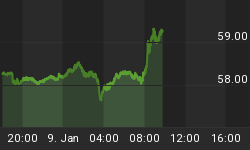After the earthquake and Tsunami wreaked horrendous damage in Japan and was blamed for huge drops in equity and other markets, extreme volatility was the best description of most global markets for this last week. The media even blamed the nuclear threat in Japan for the fall in the Dow Jones in the U.S. Clearly, this was not the case, but the extreme nature of the volatility has raised large questions as to what really is going on globally. To see why there is such high volatility over global markets we have to stand back so as to see the full picture.
The U.S. economic scene
Putting the Japanese tragedy to one side and looking at it simply as part of the trigger to the volatility, we have to look at the situation in the U.S. financial markets. Inflation, from food and energy, has risen sharply all over the world. Yes, there is a need to tackle it, but the tools required for the task work in healthy economic climates only.
The U.S. recovery is limping along at best. Housing starts for February dropped 22.5% against a rise of 18% in the previous month, undermining confidence that was in the recovery picking up momentum. So the Fed was right to hold interest rates at their lows and indicate they are continuing to use Q.E. There is a need to combat inflation with higher interest rates but not to combat food and energy inflation. In themselves this type of inflation reduces funds available for spending in other areas and would not be affected by higher rates. So, real interest rates drop further into negative territory, while growth is further undermined. In turn, such a picture points to overvaluations in equity markets. There is every reason to believe that the best current investment is cash in one form or another. With the bond markets overpriced and the prospect of further quantitative easing possible after June to prevent any threat of deflation as growth stumbles even more, the buying power of the dollar, both locally and internationally, is set to decline further. This seems also to be the future of the dollar exchange rate.
At the moment markets are tipping over into negative territory and providing an underlying reason why markets are now vulnerable to heavy volatility.
With the wide ability, at low cost, to leverage investor positions the system of 'stop losses', so important for limiting losses are also volatility precipitants. With a proliferation of day traders in most markets from equity to currencies and beyond, any market condition that produces uncertainty or fear, will become volatile quicker and deeper than were such leverage not so freely available.
In an investment climate that is essentially parochial in the States confidence in the system is higher than in nations who have a less uncomplicated past. In these countries you will find far less confidence in financial systems or in the governments of those nations, so volatility may be sharp but more easily reversed when the emotions drain away.
The state of the developed world
Since the start of the developed world's financial crisis in 2007 we have seen a deepening and widening of the maladies of the financial system there. As with the degeneration of a healthy man into sickness and weakness, the emotions claim a growing percentage of his mind and the vigorous health of the man sinks into declining confidence and fears of what lies ahead. The Eurozone debt crisis, the coming debt crises within the U.S. states and government, the limpness of the economic recovery are similar in nature to that ailing man. That's where we are today.
In fact, the way fear and volatility washed over the developed world's markets on the news of the Japanese woes was symptomatic of the condition of the developed world. That condition will remain even as Japan recovers into the growth of its ravaged areas. The indebtedness of Japan before the crisis and its growing debt afterwards will weaken the Yen promote Japanese exports and produce a level of growth not seen in the developed world for some years now.
Looking ahead to the rest of 2011 and into 2012, we expect the condition of the developed world to ensure that the new crises that are certain to arise will barge into one another making them worse still. The market reactions will continue to reflect the sort of volatility we have seen in the last week. Where real cause for weakness is found we have no doubt that markets will continue to overreact and possibly that overreaction will cause fundamental damage in itself.
We are in a financial winter of a destructive nature. Unfortunately the systems of the developed world are not designed or inclined to the deep reformation needed to bring an economic health, vigor and stability needed to put the developed world onto a long lasting growth path that we all had hoped for.
Gold & Silver prices: what are the structural changes and prices they will see.
Subscribe - For gold - www.GoldForecaster.com - for silver at www.SilverForecaster.com.
















